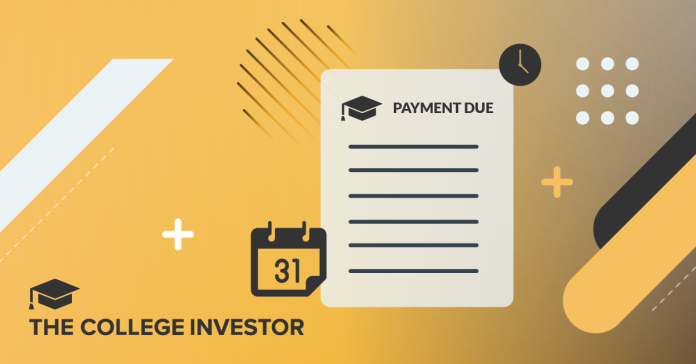- Most colleges bill students in July or August, though quarter-system schools may wait until September.
- Your financial aid offer will usually outline payment deadlines and pending credits.
- If you need student loans, you should begin applying between May and August to meet school deadlines.
One of the most common questions families ask after a student commits to a college is: “When do we actually pay the tuition bill?” The short answer is: much sooner than most expect. After students submit their enrollment deposit (usually due by May 1) schools send out their first real tuition billing statements by mid-summer.
For schools on a semester system, that means tuition and other charges for the fall term often appear on statements between late June and early August, with payment due soon after. At many schools, including most public universities, payment deadlines fall between July 15 and August 30.
Quarter-system schools, such as those in the University of California system, often send out fall bills in late August, with payment due in mid-to-late September.
UCLA, for example, expects fall quarter tuition and housing to be paid by September 20with bills assessed in early September. SDSU, a semester system school, has a due date of August 20.
Students who fail to meet the deadline may face late fees or even enrollment holds. It’s not uncommon for colleges to require all charges to be paid in full before classes begin.
What Your Bill Includes (And What It Doesn’t)
Most tuition bills cover more than just tuition. The statement typically includes:
- Tuition and fees
- Room and board for on-campus students
- Health insurance (unless waived)
- Transit passes or student services fees
- Anticipated financial aid as “pending” credits
If your student receives institutional grants or scholarships, those will appear as estimated amounts on the statement. Outside scholarships typically post only after the check is received and processed by the college. If you’re expecting one and it’s not yet posted, contact the financial aid office to avoid overpaying or incurring a late fee.
Related: How To Read A Financial Aid Award
Student loans and federal grants also appear as pending amounts, but only disburse to the school once the term begins. That means if your child is using student loans to cover living expenses, any leftover financial aid refund likely won’t arrive until two to three weeks into the term.
Course-related fees like lab charges, online access codes, or departmental surcharges can show up at the start of the term or even later. Students should keep an eye on their account balance regularly, as new fees may be added well after the first bill is paid.
What About Books, Rent, And Other Costs?
College textbooks, computers, and other supplies are usually not included on the tuition bill and are the student’s responsibility. Some students choose to use leftover loan funds or 529 withdrawals for these expenses, though reimbursements can take time.
If your student is living off campus, rent and food aren’t typically paid through the school. Instead, those costs are paid directly to landlords and grocery stores, just like they would be outside of college.
However, if you’re using a 529 plan, those expenses can still be considered qualified, up to the school’s published off-campus living allowance. Be careful not to withdraw more than that figure, or the excess may be taxed and penalized.
Applying For Student Loans Or Payment Plans
If you plan to use student or parent student loans to cover any portion of college costs, the best time to apply is between May and August. That ensures the funds are certified and processed in time to meet the school’s billing deadlines. Federal Direct Loans for students are split evenly across the academic year, with one disbursement for each term.
Parents using a PLUS Loan or a private student loan should coordinate with the school’s financial aid office to ensure the funds are scheduled properly. If your family is using a 529 plan, you can have the funds sent directly to the school or withdraw the amount yourself and pay the bill. Some families choose the latter to avoid confusion, especially if the school might treat the check as an outside scholarship.
Most colleges offer monthly payment plans to help families spread the cost over several months. These plans often have an enrollment fee (usually $75 to $100 per term) and may come with restrictions on what expenses they cover. For example, one school might allow tuition to be split over several payments but require room and board to be paid up front.
Related: Best Student Loans And Rates
Don’t Get Hit With Surprises
Late payments can result in course registration holds, dropped classes, or lost housing assignments. Set calendar reminders for your student’s billing cycle. Some schools bill monthly, while others assess most fees up front.
Even if you’ve received a generous financial aid package, the amount you owe may still be substantial. That’s especially true if work-study or outside scholarships don’t process until after the semester starts.
If the school offers a payment plan, evaluate the cost carefully. While it can ease monthly budgeting, the fees may add up quickly, sometimes totaling $300 or more over the course of a year. Review whether those fees make sense relative to the flexibility they provide.
Don’t Miss These Other Stories:
Congress Moves To Make All Pell Grants Tax-Free
How To Pay For College: The Best Order Of Operations
Should You Use A HELOC To Pay For College vs. Student Loans
Create your very own Auto Publish News/Blog Site and Earn Passive Income in Just 4 Easy Steps







